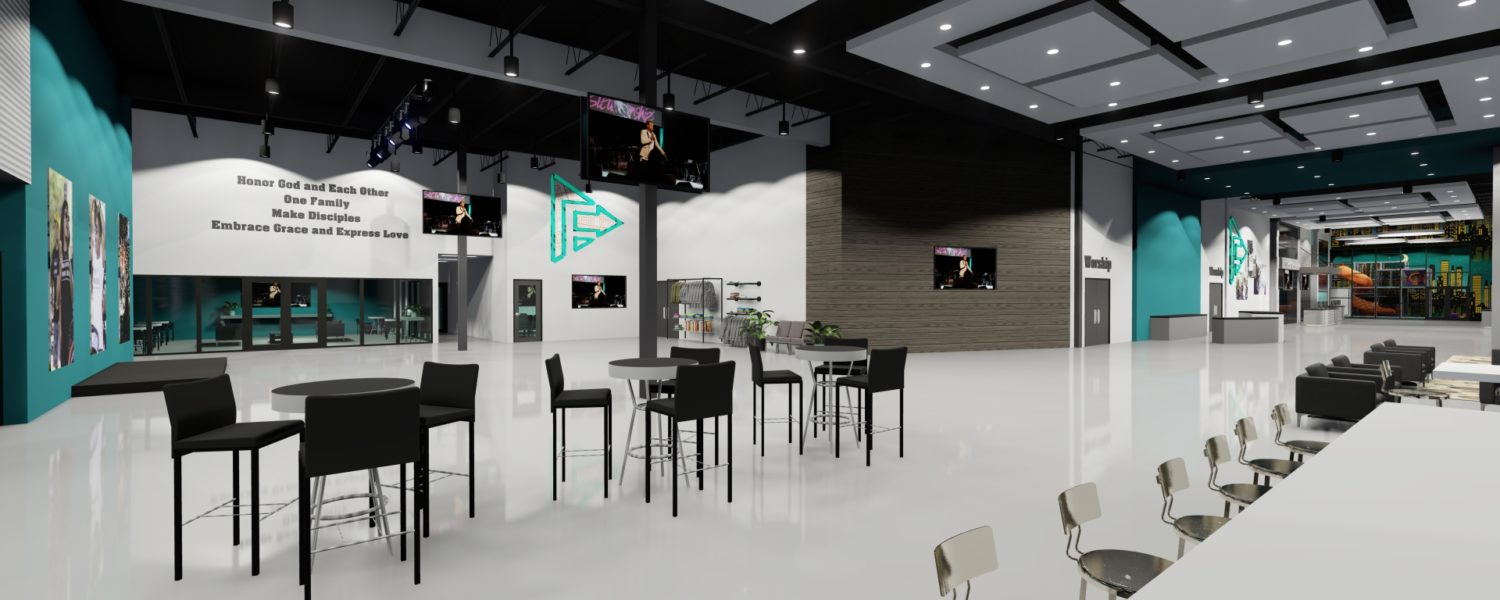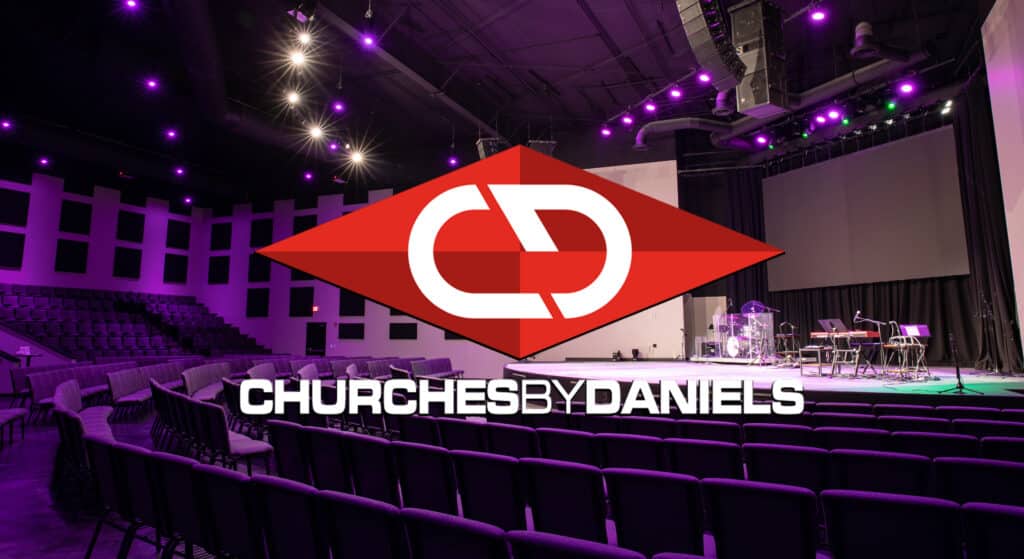In Columbia, South Carolina, Pastor Travis Greene and his congregants at Forward City Church believe they have found their ideal new location to honor God and build a community—and the size, location, and price tag were all perfect. But, how do you go about converting a big box store into a reverent place of worship?
Before the church even acquired the space, Churches by Daniels was on the scene, helping with inspections and negotiations, poring over each mechanical system to avoid costly replacements down the line.
Initially, the plan was to build in phases due to budget constraints, but by connecting the church with financial and capital campaign partners, they raised and financed the full project to realize their full vision. The project began in February of 2021, with expected completion of the project this fall.
This multipurpose space will support the needs of Forward City Church’s spiritual community with features that include a garage, storage for equipment, and a full children’s wing with an indoor play space. The new church will include a studio space for recording and special-use rooms that are specifically designed for Pastor Greene’s music ministry.
Whether you’re searching for your first church home or a new site to accommodate your growing congregation, retrofitting a commercial building into a church facility is an excellent way to expand your ministry.
Church retrofitting is the process of remodeling a commercial building—like a movie theater, big-box store, or shopping mall—into a place of worship. Although retrofitting is a creative, budget-friendly alternative to new construction, it comes with its own set of challenges you should be aware of while searching for the perfect property.
Here are seven helpful considerations before retrofitting a commercial building into a church:
- Consider the Location
The location you choose for your worship facility has a long-term impact on your church’s value, visibility, and expansion possibilities.
Before you purchase a commercial building to retrofit, ask yourself these questions. Is this building in a visible, accessible location? What are the market trends in this area? Will they increase the value of the building? Will there be a need to expand the church building in the future? If so, is there space in the area where you can build on to existing space? If the answer to these questions is “yes,” then you’ve chosen a great location!
- Investigate Local Zoning Laws
Since for-profit retailers and worship sanctuaries have different purposes, it’s essential to confirm the commercial building you want to retrofit is zoned for a religious institution. You can usually find local zoning laws by doing a quick search online.
Suppose you’re committed to a spot and need to overcome local zoning compliance. In that case, it’s beneficial to work with a professional church builder to see if you can obtain special use permits.
- Confirm Parking Availability
Another unique challenge that comes with church retrofitting is parking. Inefficient traffic flow is frustrating for your congregation, so it’s important to choose a commercial building with plenty of available parking to avoid hassles before and after your worship services.
It’s also critical to consider your parking needs in regard to your building’s location. The strip mall you want to build your church in may have tons of parking during the week—but if it’s located next to a popular breakfast spot, you’ll be competing for parking space on Sunday mornings. On the other hand, you may be eyeing a vacant building in a business complex. For parking, this location is ideal since the lot will be virtually empty on weeknights and weekends.
- Verify the Condition
Before you purchase a commercial property, hire an inspector to investigate the current condition of the building. This small step can eliminate thousands of dollars of hidden costs in the future.
Water damage, mold growth, structural issues, or extensive repair work will significantly increase your church remodeling budget. If there’s evidence of underlying problems, it might be best to look for another property to retrofit.
- Choose the Right Height
Most churches do something that retailers don’t—worship. Because of this, commercial buildings aren’t always equipped with suitable acoustics for your entire congregation to hear what your worship leader or pastor is saying.
This is mainly due to ceiling height. Although a professional church remodeler can remedy low ceilings and install soundproofing for your sanctuary, these features will add significantly to your budget. If you’re looking for a space that already has a high ceiling and is designed to project sound, consider a movie theater or other performance space.
- Check for Structural Columns
Many commercial buildings rely on large, bulky columns for support. Not only are the support beams unattractive, but they may prevent your congregation from having a clear line of sight during your worship services. Before you purchase a commercial building, talk with a reliable church builder about alternative structural options for your church.
- Consider Your Budget
The right contractor will move mountains to transform a vacant space into a beautiful, functional church home. However, it’s essential to keep your budget in mind when choosing a space to retrofit into your new church.
If you’re on a tight budget and want to change the entire layout of the building you are considering—you might want to explore other options. However, if you’re willing to be creative, you and your church designer can utilize an unconventional layout to build a space that honors your budget and fulfills your ministry vision.
The most crucial step to consider before church retrofitting is choosing a friendly, reliable church builder to help you through the remodeling process.
Churches by Daniels, Inc. has been building churches since 1980. Over the years, they have served pastors and commercial developers from coast to coast with an unwavering focus on quality craftsmanship and commitment to their clients, www.churchesbydaniels.com.









